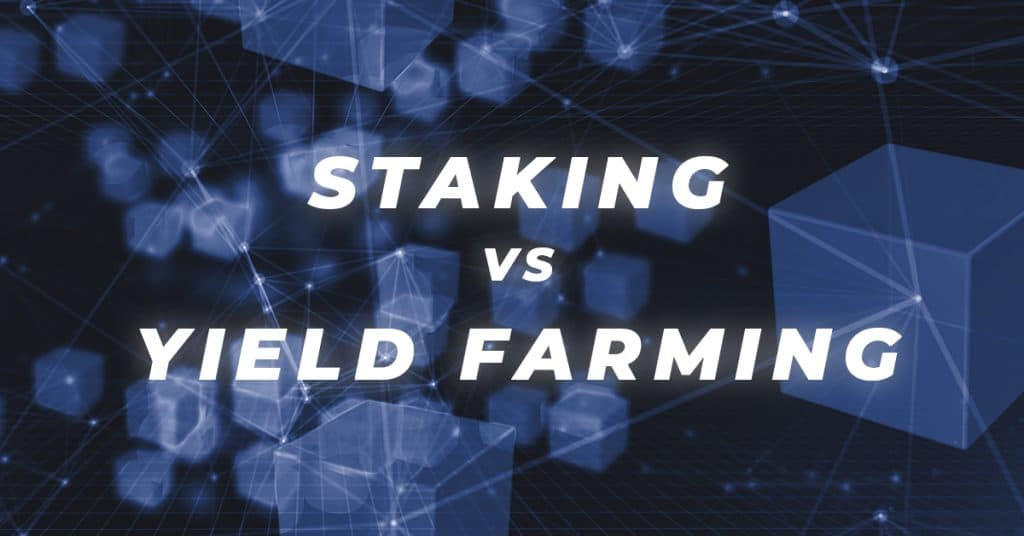Staking vs Yield Farming

In crypto, two major ways to earn income on your coins are staking and yield farming. In both cases, you temporarily depart with your capital and get coins in return. In other words, they are both forms of passive income. But there are both fundamental and practical differences in terms of profitability, effort, and risk.
The Fundamental Differences Between Staking and Yield Farming
Staking vs yield farming, the TLDR: these two things look similar on the surface but are anatomically different beasts:
With staking you help secure a blockchain network. With yield farming you allow other people to trade crypto.
Staking is how proof-of-stake crypto protocols ensure sound operation. Owners of coins who engage, put their coins 'at stake' and get rewarded with the occasional honor of being chosen to build and/or validate a new block. Should they not play by the rules of properly building and/or validating blocks, they will get penalized ('slashed'). This is the game-theoretic foundation that ensures the integrity of the proof-of-stake chain, not unlike how in proof-of-work chains, mining costs drive miners to honest block building. Of course, stakers are rewarded for their efforts: they get a percentage. (read more: 6 misconceptions about staking).
Yield farming is a method of earning yield (rewards or interest) by depositing a pair of coins into a pool. With other users, you become a liquidity provider who makes trading possible. The rewards come from other users, who use the pool to trade their coins. They pay a transaction fee in return, which is the yield you 'farm'. There are also variants of yield farming where extra yield is paid out in the token










